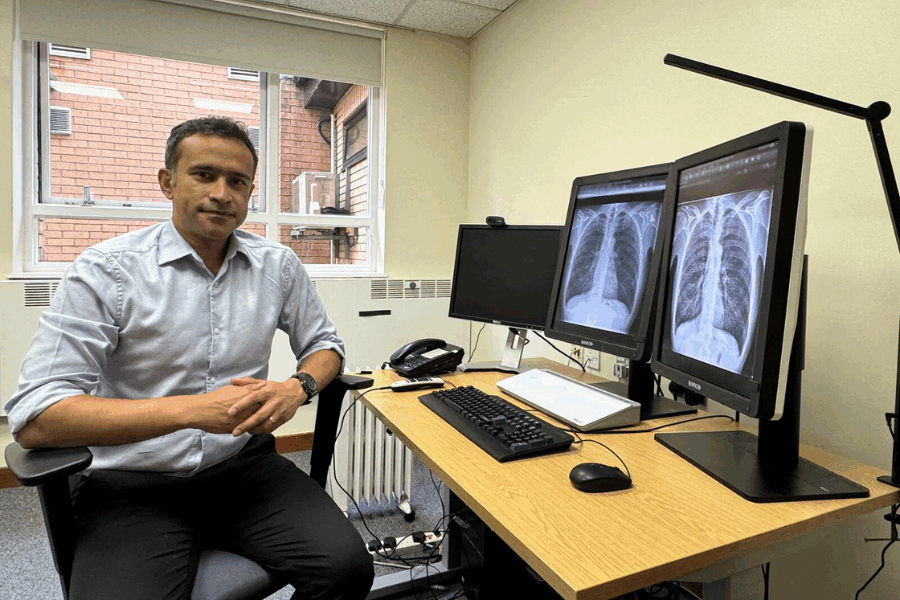
University Hospitals of Leicester NHS Trust (UHL) is carrying out the first UK evaluation of the safety and effectiveness of using AI software across different patient groups.
Working with specialist AI evaluation company Aival, the Trust is evaluating the performance of a system which currently supports clinicians when viewing chest X-rays.
Dr Indrajeet Das, Consultant Radiologist at UHL, said: “Artificial intelligence has the potential to transform the NHS, and working alongside doctors it can act as a second pair of eyes that helps reduce the chance of a missed diagnosis. That’s what is driving me to introduce AI into the process, as it doesn’t get tired, and it can remove some of these errors.
“But with so many AI tools available on the market, there’s a danger of the NHS becoming a wild west of products that aren’t being properly checked. UHL is leading the way on AI safety and making sure these products are improving outcomes for patients.”
The AI system assists with triage and reporting, providing a smart analytics dashboard which enables radiologists to prioritise critical cases and generate patient reports more quickly.
Leicester is one of Britain’s most diverse cities, making it a perfect setting to ensure the system works well for patients for many people from a wide variety of ethnic and cultural backgrounds.
Monitoring will also look for any changes in AI performance over time, addressing issues such as ‘algorithmic drift,’ where accuracy may decline due to population changes or software updates.
Will Monaghan, Group Chief Digital Information Officer, at UHL said: “Building confidence in how we use AI is essential if it is to play a meaningful role in the NHS. Trials like this give us the evidence to show that AI can be trusted to support clinical decision-making, improve safety, and deliver real value for patients.
“When we have confidence in technology, it improves the patient experience – with faster diagnoses, greater consistency, and more time for clinicians to provide personalised care. Most importantly, it gives us the assurance that these tools are helping us achieve better outcomes across Leicester, Leicestershire and Rutland.”